This document explains the steps required to connect Lead Liaison with your Salesforce.com Group Edition account. |
Lead Liaison is installed into Salesforce.com in five easy steps. Here's an overview of the installation process.
Lead Liaison's Salesforce.com package will make the following changes to your Salesforce.com account:
Follow these step by step instructions to connect your Salesforce.com account to Lead Liaison.
Lead Liaison requires one Salesforce.com user account be used as a sync account. The sync account is the account used to send data bidirectional, from Salesforce.com to Lead Liaison and from Lead Liaison to Salesforce.com. The sync account is required for operation and has no material impact on leads, contacts, opportunities or any other event.
Salesforce.com suggests updating passwords every 90 days. If credentials for the sync account expire then syncing between Lead Liaison and Salesforce.com will fail. We suggest using a Salesforce.com Admin user as the sync account to use with Lead Liaison. See the section below called "Salesforce.com Password Profiles" for tips on how to set the password to never expire on your Salesforce.com user account. |
Follow these steps below to enter your CRM sync user:
Once you've connected your Lead Liaison account to your Salesforce.com account successfully you'll see a success prompt like this:
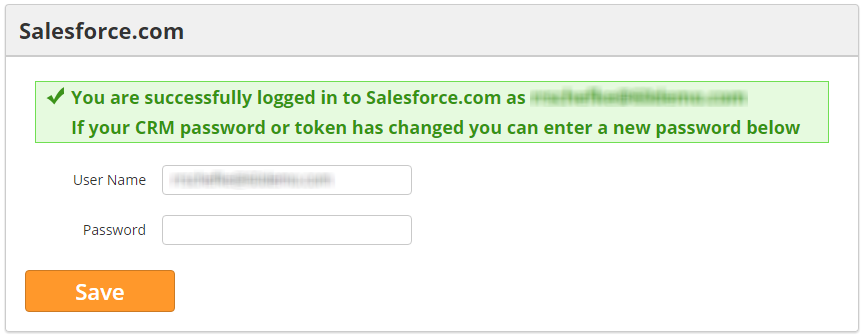
Lead Liaison's Salesforce.com plugin is live on Salesforce's AppExchange portal. Access the plugin here: http://appexchange.salesforce.com/listingDetail?listingId=a0N30000009vFlTEAU
Obtain the package password from your Lead Liaison Revenue Performance Specialist. |


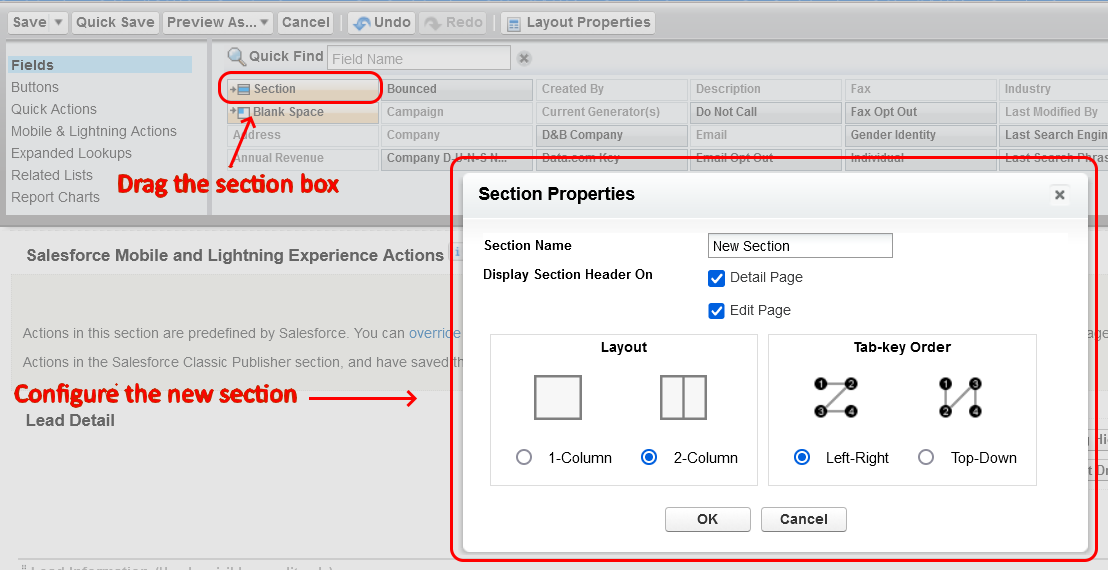


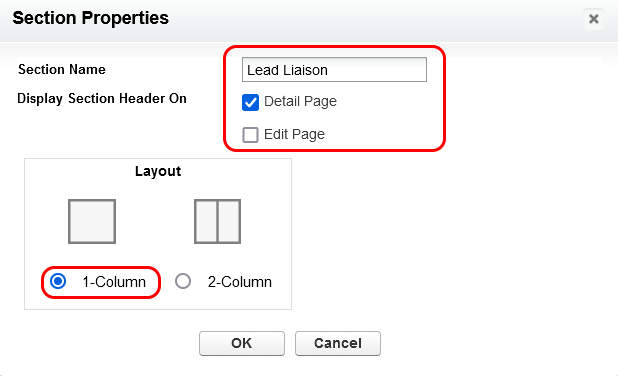
![]()
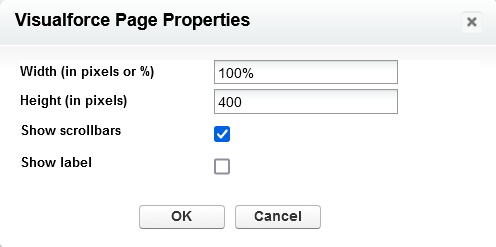
Next, map the custom fields added by the Lead Liaison plug-in. Mapping custom fields ensures information added to a Lead is transferred to a Contact when the lead is converted in Salesforce.com. To map fields do the following:
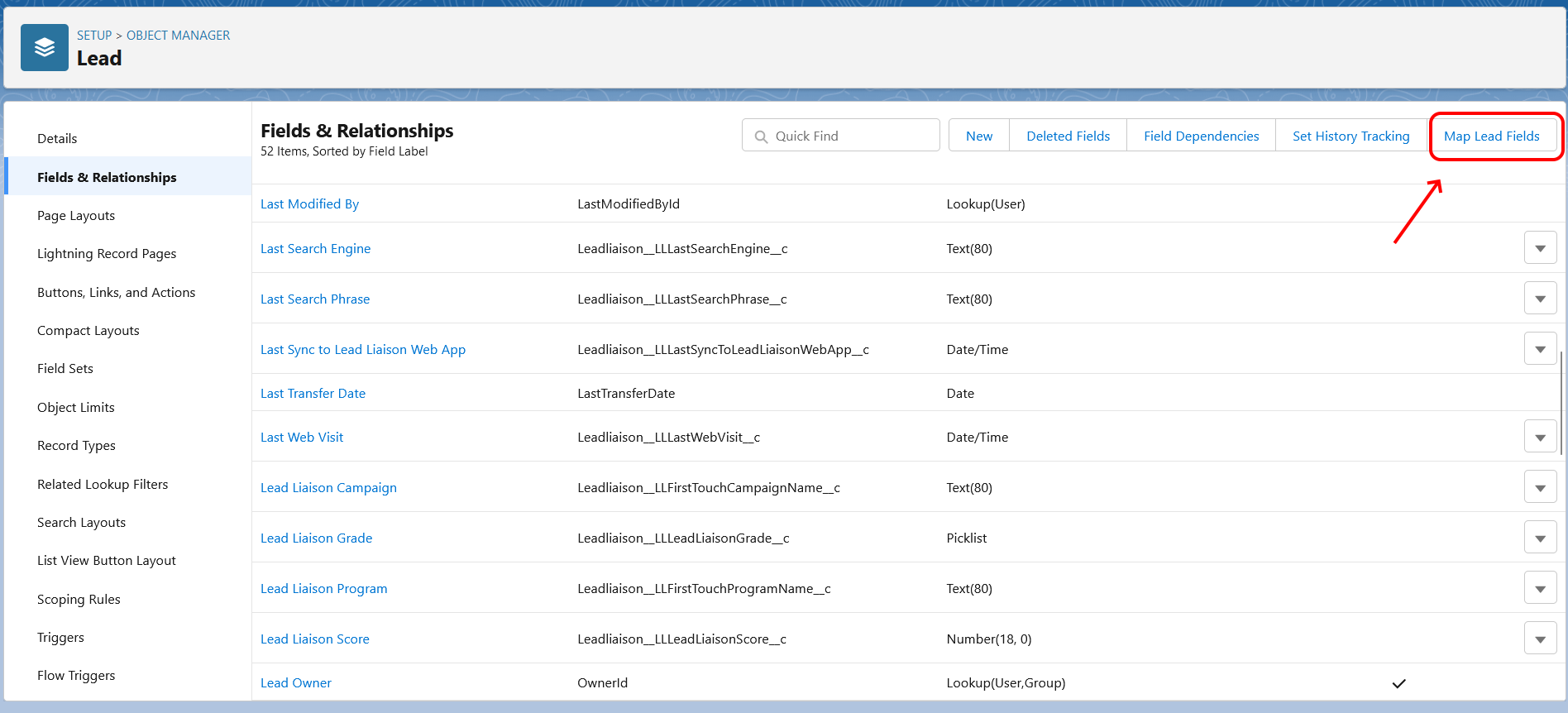
4. Click on the "Contact" tab.
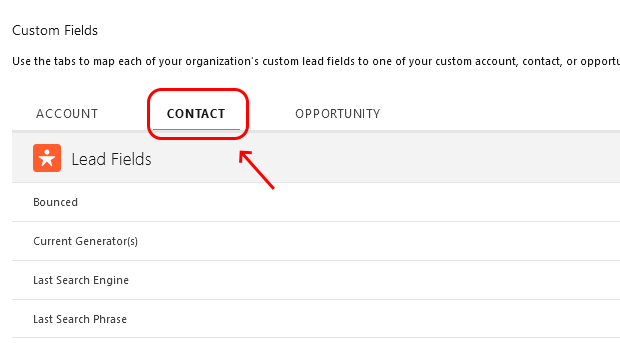
3. Map each custom Lead field to the related Contact field. Your results should look similar to the image below:
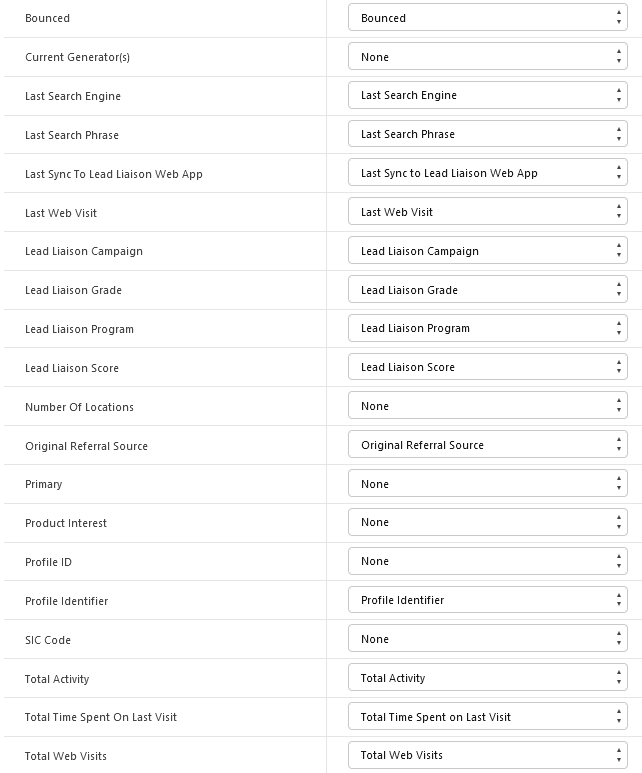
Make sure to map all the custom fields added by Lead Liaison package (Lead Liaison Score, Total Activity, Total Web Visits, Total time spent on last visit, Last Sync to Lead Liaison Web App, Last Web Visit, Last Search Engine, Last Search Phrase, Original Referral Source, Bounced and Profile Identifier) |
Map only the "Profile Identifier" field. Do not map the "Profile ID" field. Lead Liaison adds the Profile Identifier field automatically. This field is a formula that builds the hyperlink for the Profile ID. By mapping the Profile Identifier Salesforce.com will automatically map the Profile ID value for you. |
It's not necessary to create an equivalent custom field in Lead Liaison for each and every custom field in Salesforce.com. Create custom fields in Lead Liaison only for the fields you need to use in your business processes, such as segmentation, nurturing, scoring, etc. |
To create custom fields in Lead Liaison follow these instructions.
Note, custom fields can automatically be created for you as shown in the steps below.
You're now done with setup inside Salesforce.com. Next, go to Lead Liaison and finalize setup from Lead Liaison's web application.
Lead Liaison synchronizes data between Lead Liaison's local database and Salesforce.com in real-time. To configure your CRM settings for Lead Liaison:
Step 1: Select Edition and whether to automatically import data for new Salesforce.com fields |
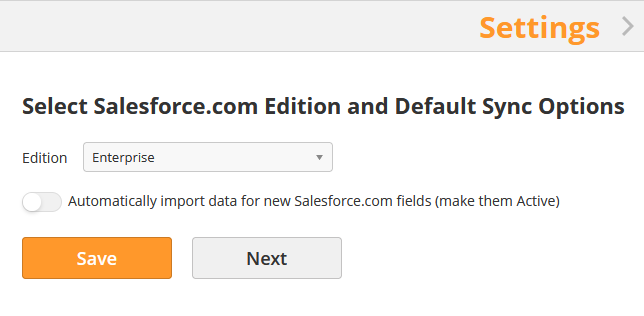

Step 2: Install Plug-In |


![]()
If you see an error similar to the one below during Step 2 of the CRM configuration wizard then there's an issue with the visibility/permissions of the SFDC field. SFDC Group Edition requires all standard and custom fields to be added to the layout to be visible. Lead Liaison requires all SFDC standard and custom fields to be visible for Lead Liaison to communicate with your Group Edition instance. Add the field in question from the error prompt to your Lead/Contact layout and run Step 2 again to remove the error. |

Step 3: Import Metadata |
In Lead Liaison change the Lead and Contact field mappings:
Map the SFDC standard field "Lead Source" to the new custom field called "SFDC Lead Source" with bi-directional sync.
Map the new custom field in SFDC, "Lead Liaison Lead Source", to Lead Liaison's "Original Lead Source" field with one-way syncing from Lead Liaison to Salesforce.com.
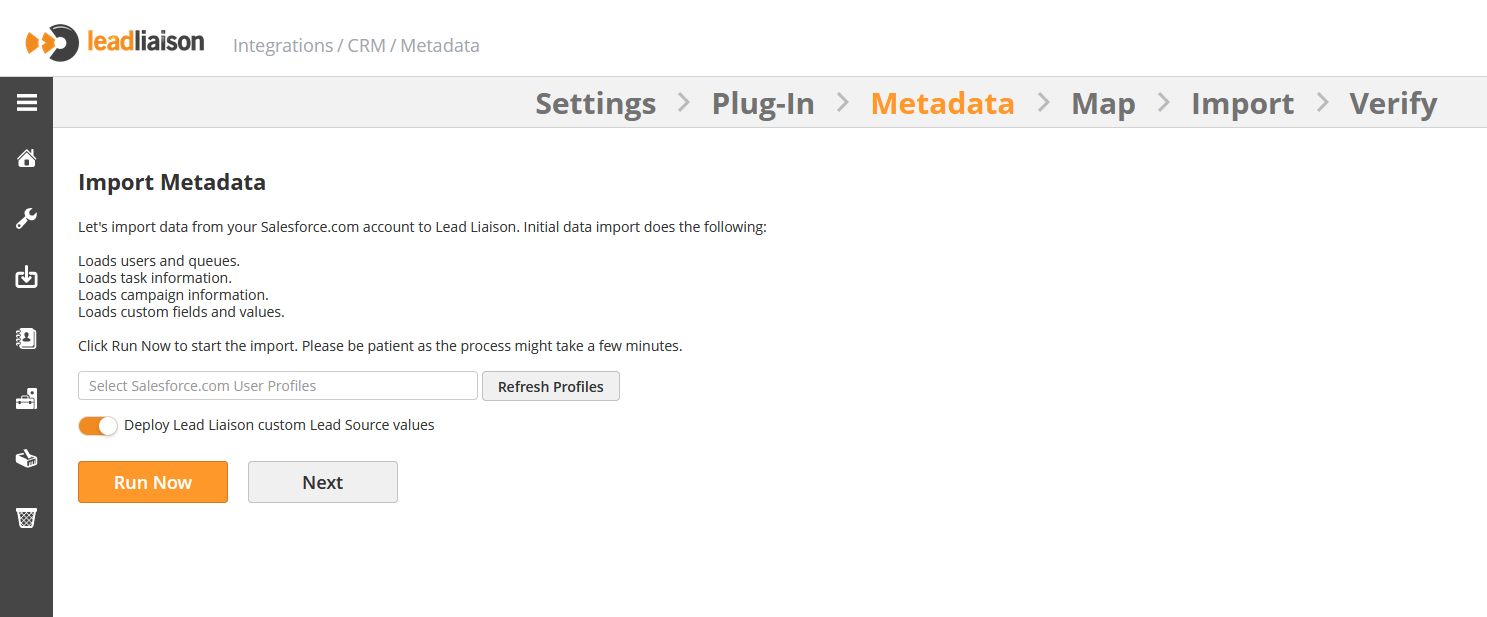
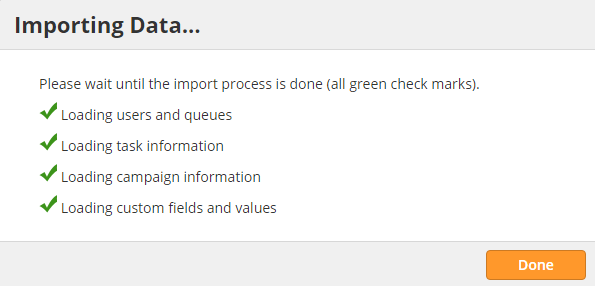
Step 4: Map Fields |
Only create and map custom fields in Lead Liaison for the custom fields in SFDC that you plan to use. There is no need to create a Lead Liaison custom field for each SFDC custom field. For example, if you plan to use only 10 custom fields in SFDC for scoring, grading, nurturing, segmentation, distribution, etc. then create 10 custom fields in Lead Liaison. We suggest using the same name for the custom field in both Lead Liaison and Salesforce.com to make mapping easier. |
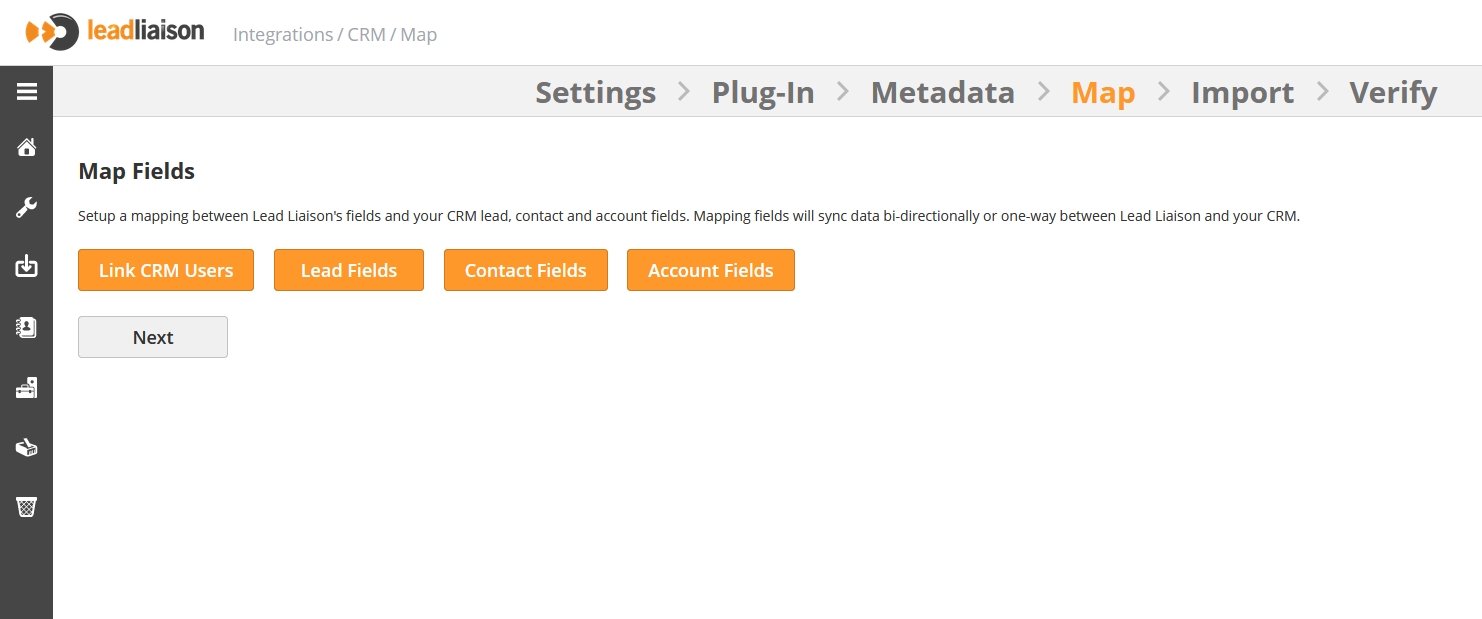
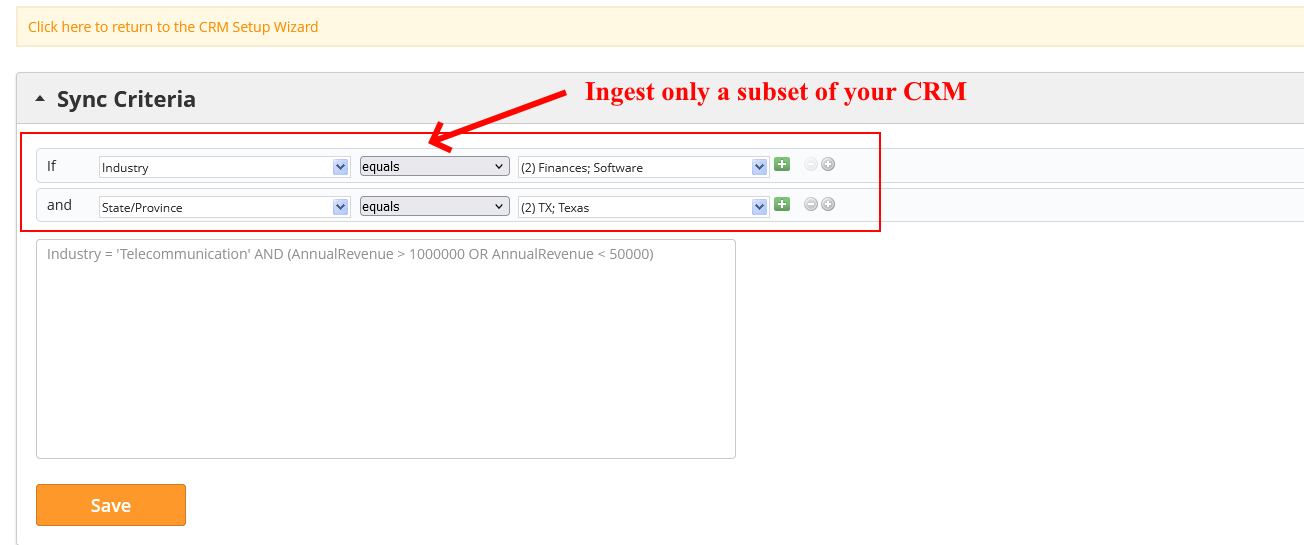
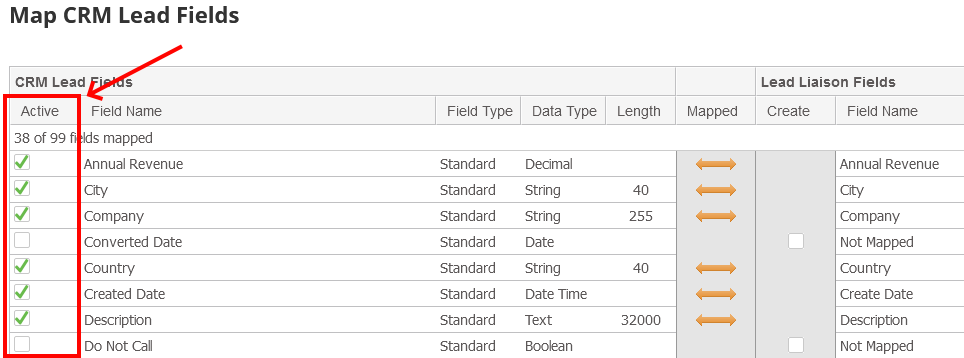


Step 5: Import Records |
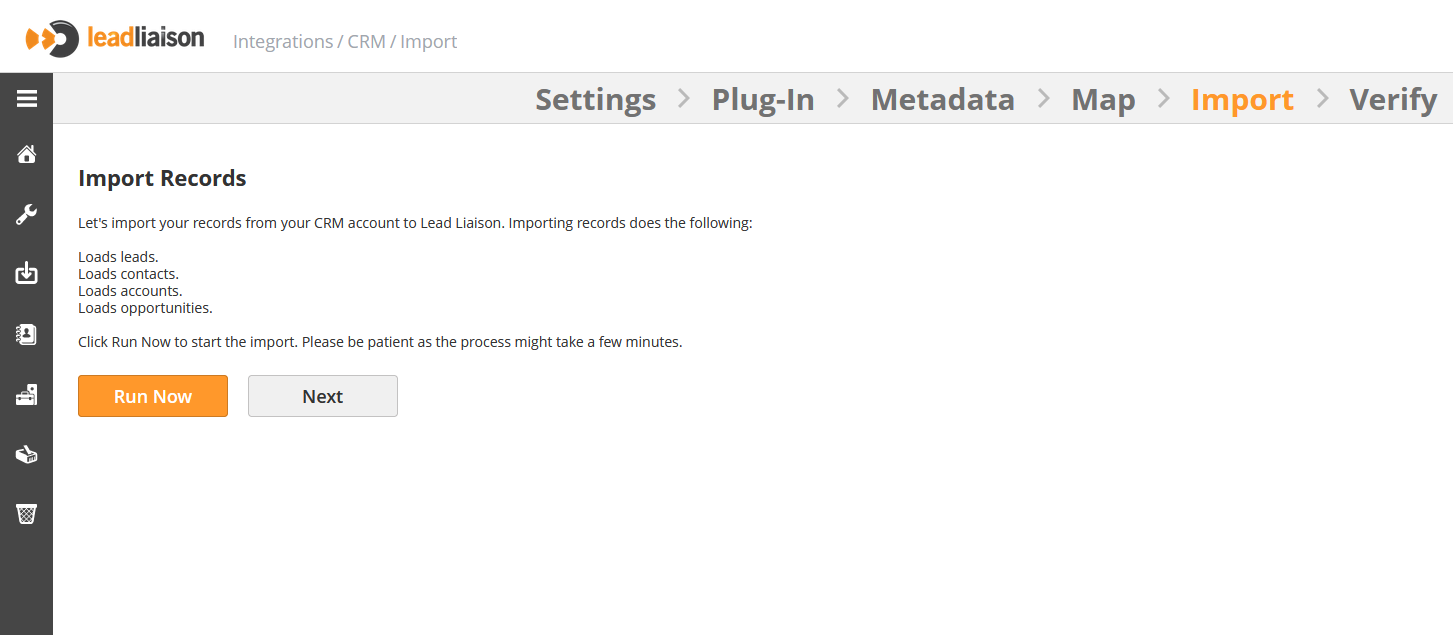
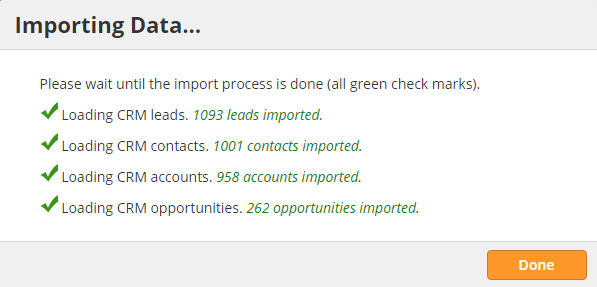
For the "Importing Data" process, Lead Liaison will start importing the SFDC records from SFDC to Lead Liaison. For each record type (Lead, Contact or Account) Lead Liaison makes only one ping to SFDC and loads a list of records to process in Lead Liaison. The default amount of imported data per request is 500, but may vary from one edition of SFDC to another. |
Step 6 (Final Step): Verify Data |
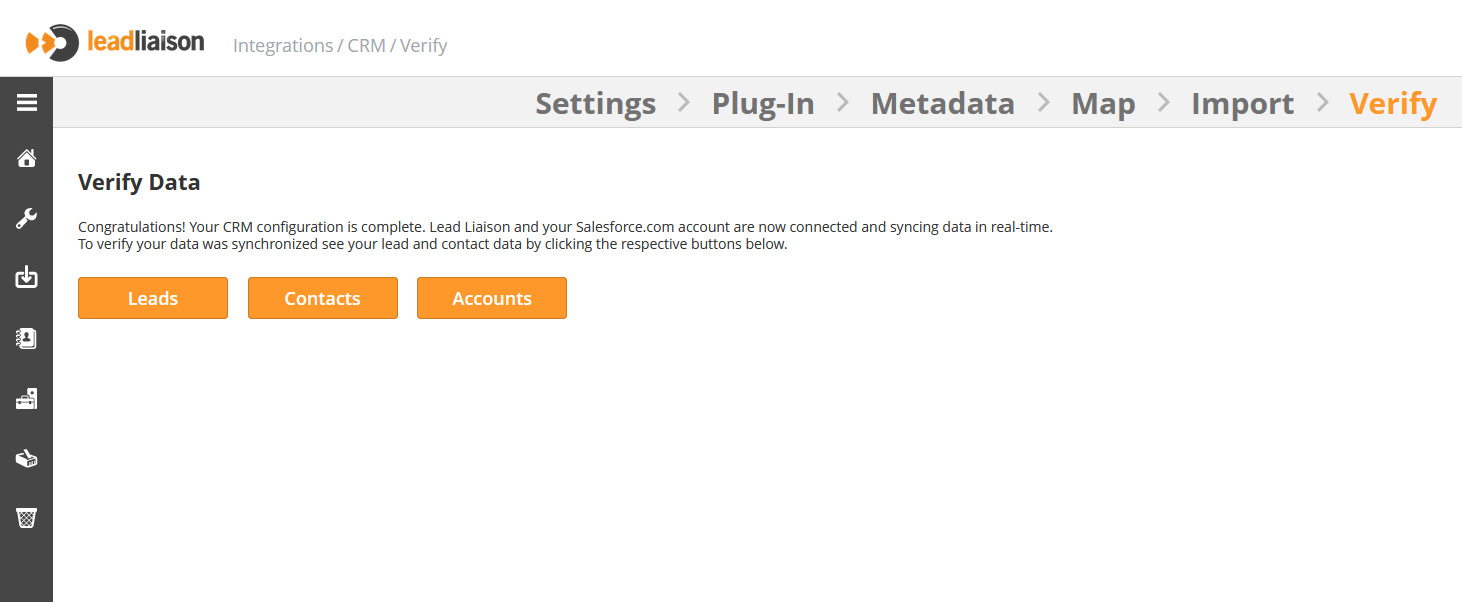
Click on Leads, Contacts or Accounts to see a list of each of them.
Once you are done, then your CRM configurations are complete and the bi-directional sync process between Salesforce.com and Lead Liaison will work automatically.
We recommend using your Administrator User for the sync account. Disable resetting of your password for your sync account by doing one of the following:
System Administrators can disable password expiration in two ways:
1. For all users:
Setup > Security > Password Policies
2. For User Profiles:
In each case, multiple users may be affected which is not recommended for security purposes. If a particular user needs to have password expiration disabled, a new profile specific for that user will need to be created:
Go to Settings > Users > Profiles and follow the steps below:
1. Identify the profile associated to the user that needs password expiration disabled.
2. Click on the 'Clone' button to create an identical profile to the user's current profile.
3. Once the new profile has been created, edit the profile and check the 'Password Never Expires' option under the Administrative Permissions section.
4. Save the profile.
5. Edit the user record and associate the user to the newly created profile.
In the end, the user will have the same profile as before except with the password expiration set to never expire.
Lead Liaison offers the ability to automatically create a lead in Salesforce.com from visitors to your website that come from Connector (E-mail Marketing solution) or Send & Track (Microsoft Outlook Plug-in).
Congratulations, you're done! |
Removing a custom field in SFDC will disrupt the synchronization process between Lead Liaison and SFDC. |
Sometimes it's necessary to remove a custom field previously created in Salesforce.com. If a custom field is removed it will disrupt the synchronization process between Lead Liaison and Salesforce.com until one of the following two events occur, whichever occurs first.
To avoid a disruption in service we suggest doing the following:
1. Delete custom field in SFDC and remove from SFDC lead/contact layout
2. Run Step 3 of the CRM Configuration Wizard (Import Metadata) immediately after deleting/remove custom field
Any field in the Lead Liaison Marketing Data section can be renamed or removed. When removing a field in this section make sure to follow the same steps as mentioned above in the Removing Custom SFDC Fields section. Basically, run Step 3 of the CRM Configuration Wizard right away to avoid breaking the synchronization process.